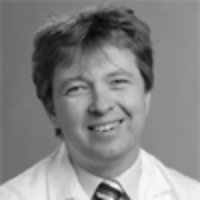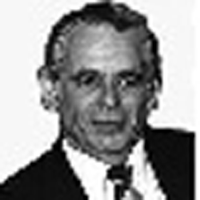Abstract
Research Article
Bacillus amyloliquefaciens as a plant growth promoting bacteria with the interaction with of grass salt Distichlis palmeri (Vasey) under field conditions, in desert of Sonora, Mexico
Rueda Puente Edgar O*, Ruiz Alvarado Cristina, Jesús Borboa Flores, Victor Cardenas Salazar, Soto Ortiz Roberto and Lourdes Díaz Cervantes
Published: 02 October, 2018 | Volume 2 - Issue 3 | Pages: 059-067
The halophyte Distichlis palmeri (Vasey) is a plant resource with high potential to be harvested in the coastal areas of northwestern Mexico; enlarge the knowledge and domestication for its incursion into the agricultural sector, plays an important role for arid areas with saline intrusion problems. However, its productivity depends on the supplementary supply of nitrogen, as well as other essential macro and micronutrients. The microorganisms considered beneficial are an alternative to chemical fertilization, highlighting those Plant Growth Promoting Bacteria (PGPB). In the present study, the inoculation of the Bacillus amyloliquefaciens (B.a.) as a halobacterium PGPB was evaluated to know the response in seeds of Distichlis spicatai obtained from natural population from colorado river in Delta north of the Gulf of California. Wild seed was collected and germinated previously inoculated with B. a., and sowed in germinated beds. Later, seedlings were planted under field and salinity conditions in the coast of Hermosillo, Sonora. Three treatments were examined (T1: B.a., T2: Chemical fertilization, T3: Negative control), with four repetitions each treatment. Each repetition consisted of experimental plots of 5 x 5 m, with a separation of 1 m between them. The harvest was carried out 600 days after sowing. The results indicate that treatments inoculated with halobacteria B.a., showed significant results in crude protein, non-protein nitrogen, neutral detergent fiber and acid detergent fiber, as well as spike length and number of seeds. The results obtained suggests the feasibility of biofertilizers where biomass and seed production are significant compared to non-inoculated controls.
Read Full Article HTML DOI: 10.29328/journal.jpsp.1001021 Cite this Article Read Full Article PDF
Keywords:
Distichlis palmeri; Halophytes; Cereals; Salinity; Adaptation; Plant growth promoting bacteria
References
- Valiente BA. La conservación de los desiertos: un desafío. PRONATURA. 1996; 4: 34-37.
- Toledo VM. Ordóñez MJ. El panorama de la biodiversidad en México. Una revisión de los hábitats terrestres. In: Ramamoorthy TP.; R. Bye; A. Lot y J. Fa (Comp.) Diversidad Biológica de México. Instituto de Biología, UNAM. México. 1998; 791.
- Haro A, J.L. Seminario sobre plantas halófitas. Fenología y Propagación de Distichlis palmeri (Vasey). Depto. de Agricultura y Ganadería. Universidad de Sonora. Hermosillo, Sonora. 1989; 1-5.
- Araiza QH. Las Plantas Halófitas del Golfo de California. In: memorias del II Congreso Nacional de Halófitas. Memorias. 1988; 4-10.
- Yensen SB, Weber CW. Composition of Distichlis palmeri Grain, a Saltgrass. J. Food Science. 1986; 51: 1089-1090. Ref.: https://goo.gl/MeaPDS
- Shreve F, Wiggins IL. Vegetation and flora of the Sonoran Desert. I. Stanford, CA, USA. 1964. Ref.: https://goo.gl/sDjDCZ
- Gould F, Moran R. The grasses of Baja California, México. Memories 12th. Meeting of the Soc Nat Hist. San Diego, CA, USA. 1981.
- Horvath J. Distichlis stricta. Saltgrass, desert saltgrass. 2018; Ref.: https://goo.gl/hNwn23
- Uchytil, RJ. Distichlis spicatai. 2018. USDA, Forest Service, Rocky Mountain Research Station, Fire Sciences Lab. Fire Effects Information. 2018. Ref.: https://goo.gl/BZhBxp
- Arredondo JT, García-Moya E, Kobashi J. Efecto de la temperatura, el fotoperíodo y la salinidad en el crecimiento y fisiología de Distichlis spicatai. Agrociencia 1991; 25: 103-122.
- Lugg DG. The potential of saltgrass as a forage grass irrigated with saline water. Project No. 1345653. 2018; Ref.: http:// wrri.nms.edu/publish/techrpt/abstracts/abs162.html
- Martínez B. Producción agraria ecológica. En: Revista de desarrollo rural y cooperativismo agrario. Universidad de Zaragoza. 1996; 5: Ref.: https://goo.gl/N9jzTb
- Jena P, Adhya T, Rao V. Nitrogen fixation in Azospirillum sp. isolated from rice and soil as influenced by carbofuran and combined nitrogen Zentralbl Microbiology. 1992; 147: 340-344. Ref.: https://goo.gl/g3jwrd
- Gamo T, Sang B. Growth-promoting Azospirillum spp isolated from rice roots of several non-gramineus crops in Japan. Soil Science Plant Nutrition. 1990; 37: 455-461. Ref.: https://goo.gl/kMs6f4
- Okon Y, Labandera G. Agronomic applications of Azospirillum: and evaluation of 20 years worlwide field inoculation. Soil Biology & Biochemistry. 1994; 26: 1591-1601. Ref.: https://goo.gl/97D2iR
- Buckman, H. Brady N. Naturaleza y propiedades de los suelos. Ed. Montaner y Simon S.A. España. 1977; 589. Ref.: https://goo.gl/mNRC8X
- De Troch P, Vaderleyden J. Surface properties and motility of Rhizobium and Azospirillum in relation to plant root attachment. Microbiology Ecology. 1996; 32:149-169. Ref.: https://goo.gl/RqmyWU
- Bashan Y, Ream Y, Levanony H, Sade A. Non-specific responses in plant growth, yield, and root colonization of noncereal crop plant to inoculation with Azospirillum brasilense cd. Canadian Journal Botany. 1989; 67: 1317-1324. Ref.: https://goo.gl/2TSy8o
- Castellanos CT. Respuesta de la superficie de la bacteria promotora de crecimiento de plantas Azospirillum spp. a estímulos externos. Tesis Doctoral. Centro de Investigaciones Biológicas del Noroeste S.C. La Paz, B.C.S. México. 1998; 7.
- Tarrand J, Krieg N, Bobereiner J. A taxonomic study of the Spirillum lipoferum group, with descriptions of a new genus, Azospirillum gen. Nov. and two species, Azospirillum lipoferum (Beijerinck) comb. Nov. and Azospirillum brasilense sp. Nov. Can J Microbiol. 1978; 24: 967-980. Ref.: https://goo.gl/rH4ip3
- Magalhaes F, Baldani J, Souto S, Kuykendall J, Bodereiner J. A new acidtolerant Azospirillum species. Academia Brasileña de Ciencias. 1983; 55: 417-430. Ref.: https://goo.gl/jXQg2p
- Khammas K, Ageron E, Grimont P, Kaiser P. Azospirillum irakense sp. Nov. a nitrogen-fixing bacterium associated with the roice roots and rhizosphere soil. Res Microbiol. 1989; 140: 679-693. Ref.: https://goo.gl/1BrCPF
- Reinhold, B., Hurek, T., Fendrik, I., Pot, B., Gillis, M., Kersters, K., Thielmans, S. and De Ley, J. Azospirillum halopraeferens sp. nov. a nitrogen-fixing organism associated with roots of Kallar grass (Leptochloa fusca L. Kunth). International Journal of Systematic Bacteriology. 1987; 37:43-51. Ref.: https://goo.gl/65jYRV
- Carrillo A, Puente M, Castellanos T, y Bashan Y. Aplicaciones Biotecnologicas de Ecologia Microbiana. Manual de Laboratorio. Pontificia Universidad Javeriana, Santafé de Bogotá, Colombia- Centro de Investigaciones Biológicas del Noroeste La Paz, Baja California Sur, México. 1998; 51.
- Chapman, H. D. Pratt PF. Método de Análisis para Suelos, Plantas y Agua. Ed. Trillas. México. 1979; 113-114. Ref.: https://goo.gl/1XrLtq
- Allison EL, Brown JM, Howard HE. Diagnóstico y Rehabilitación de Suelos Salinos y Sódicos. Ed. Limusa. México. 1980; 106.
- Millar CE, Turk LM, Forth HD. Fundamentos de la Ciencia del Suelo. Editorial CECSA. México. 1981 479.
- Jackson ML. Análisis Químico de Suelos. Ediciones Omega. Tercera Edición. Barcelona España. 1976; 350.
- Shourbagy MN, Yensen NP. Siembra directa de Distichlis palmeri en suelos irrigados con agua de mar. En: Memoria del VII Simposio Sobre Medio Ambiente del Golfo de California. Loreto, B.C.S., México. 1982; 57-58.
- Richards E. Guía sobre la Calidad de las Aguas de Riego. Handbook No. 50. Departamento de Agricultura de los Estados Unidos. Washington, D.C. 1954; 80. Ref.:
- De la Loma LJ. Experimentación Agrícola. Editorial Hispano-Americana S.A. México. 1980; 229.
- Glenn EP, Fontes M, Yensen N. Productivity of halophytes Irrigated With Hypersaline Seawater in the Sonora Desert in Biosaline Research. Ed. San Pietro Anthony, Plenum, New York. 1982; 491-494. Ref.: https://goo.gl/pjtejz
- SAS/STAT User´s Guide 6.08. SAS Institute Inc. Carey, NC, USA. 2001;
- Tien T, Gaskins M, Hubbell D. Plant growth substances produced by Azospirillum brasilenese and their effect on the growth of pearl millet (Pennisetum americanum L.) Applied Environmental Microbiology. 1979; 20: 1016-1021. Ref.: https://goo.gl/BXQb2v
- Box GE, William GH, Stuart H. Estadística para Investigadores. Ed. Reverté, Barcelona España. 1993; 363-384. https://goo.gl/zTJACN
- Zexun L, Wei S. Effect of cultural conditions on IAA biosynthesis by Klebsiella oxytoca SG-11.Chinese Journal of Applied and Enviromental Biolgy. 2000; 6: 66-69. Ref.: https://goo.gl/bXVMae
- Renganathan P, Ruíz-Alvarado C, Hernández-Montiel LG, Duraisamy P, Rueda- Puente EO. Evaluation of genetic diversity in germplasm of paprika (Capsicum spp.) using random amplified polymorphic DNA (RAPD) markers. J Plant Sci Phytopathol. 2017; 1: 080-086. Ref.: https://goo.gl/dhbdDo
- Puente M, Bashan Y. Effect of inoculation with Azospirillum brasilense strains on germination and seedlings growth of the giant columnar cardon cactus (Pachycerus pringler). Symbiosis. 1993 15: 49-60. Ref.: https://goo.gl/1Sgf1W
- Goodfriend WL, Olsen MW, Frye RJ. Soil microfloral and microfaunal response to Salicornia bigelovii planting density and soil residue amendment. Plant and Soil. 2000; 1: 23- 32. Ref.: https://goo.gl/sCPm8U
- Díaz V, Ferrera C, Almaraz S, Alcántar G. Inoculation of plant growth-promoting bacteria in lettuce. Terra. 2001; 19: 327-335. Ref.: https://goo.gl/3rdhhR
- Arsac J, Lamothe C. Fages J. Growth enhancement of Maize (Zea Mays) through Azospirillum lipoferum inoculation: effect of plant genotype and bacterial concentration. Agronomie. 1990; 10: 640-654. Ref.: https://goo.gl/ii7FZg
- Puente M, Holguin G, Glick B, Bashan Y. Root-surface colonization of black mangrove seedlings by Azospirillum halopraeferens and Azospirillum brasilense in seawater. Microbiol. Ecology. 1999; 29: 283-292. Ref.: https://goo.gl/uA9d3Z
- El-khawas H, Adachi K. Identification and quantification of auxins in culture media of Azospirillum and Klebsiella and their effects on rice roots. Biology and Fertility of Soils. 1999; 29: 377-381. Ref.: https://goo.gl/rw4ugG
- Pérez-Silva R. Influencia de diferentes niveles de nitrógeno y poblaciones de plantas sobre los rendimientos de maíz (Zea mays L.) Agronomía Tropical. 1989; 27: 451-459. Ref.: https://goo.gl/rH54xE
- Itai C, Richmond A, Vaadia Y. The role of root cytokinins during water and salinity stress. Journal Botany. 1968; 63: 694-701.
- Khan M, Khan I, Khizar T. Plant growth regulators from species differing in salt tolerance as affected by soil salinity. Plant Soil. 1976; 45: 269-276. Ref.: https://goo.gl/vSvVib
- Conrad K, Bettin B, Neumann S. The cytokinin production of Azospirillum and Klebsiella possible ecological effects. In: M. Kaminek et al. (eds), Physiology and biochemistry of cytokinins in plants. Symposium Liblice, República de Checoslovaquia. 1992; 401-405.
- El-Shatnawi MKJ, Makhadmeh I. Ecophysiology of the Plant-Rhizosphere System. Journal Agronomy and Crop Science. 2001; 187: 1-9. Ref.: https://goo.gl/hjb3ca
Figures:

Figure 1
Similar Articles
-
Bacillus amyloliquefaciens as a plant growth promoting bacteria with the interaction with of grass salt Distichlis palmeri (Vasey) under field conditions, in desert of Sonora, MexicoRueda Puente Edgar O*,Ruiz Alvarado Cristina,Jesús Borboa Flores,Victor Cardenas Salazar,Soto Ortiz Roberto,Lourdes Díaz Cervantes. Bacillus amyloliquefaciens as a plant growth promoting bacteria with the interaction with of grass salt Distichlis palmeri (Vasey) under field conditions, in desert of Sonora, Mexico. . 2018 doi: 10.29328/journal.jpsp.1001021; 2: 059-067
-
Antifungal activity of epecific plant essential oils against fusarium graminearumEmre Yörük*,Esma Özsoy,Buket Kesercan. Antifungal activity of epecific plant essential oils against fusarium graminearum. . 2020 doi: 10.29328/journal.jpsp.1001052; 4: 060-062
-
Ion transporters and their molecular regulation mechanism in plantsFaiçal Brini*,Walid Saibi. Ion transporters and their molecular regulation mechanism in plants. . 2021 doi: 10.29328/journal.jpsp.1001058; 5: 028-043
-
Strobilurins: New group of fungicidesRasha E Selim*,Mohamed S Khalil. Strobilurins: New group of fungicides. . 2021 doi: 10.29328/journal.jpsp.1001062; 5: 63-064
-
Genetic variability, divergence, and path coefficient analysis of yield and yield related traits of Durum wheat (Triticum turgidum l. var. Durum) genotypes at Jamma district, south wollo zone, amhara region, EthiopiaHaile Tefera*. Genetic variability, divergence, and path coefficient analysis of yield and yield related traits of Durum wheat (Triticum turgidum l. var. Durum) genotypes at Jamma district, south wollo zone, amhara region, Ethiopia. . 2022 doi: 10.29328/journal.jpsp.1001078; 6: 075-083
-
Mitigation and adaptation to climate change of plant pathogensFrancesco Lops*. Mitigation and adaptation to climate change of plant pathogens. . 2022 doi: 10.29328/journal.jpsp.1001082; 6: 101-102
-
Plant growth, Yield and Leaf Nutritional value of Jute (Corchorus olitorius L.) as Influenced by Banana Peel levels under Salt Stress conditions in Coastal region of CameroonMathias Julien Hand*,Chimène Fanta Abib,Kingsley Mbi Tabi,Alphonse Ervé Nouck,Libert Brice Tonfack,Victor Désiré Taffouo,Emmanuel Youmbi. Plant growth, Yield and Leaf Nutritional value of Jute (Corchorus olitorius L.) as Influenced by Banana Peel levels under Salt Stress conditions in Coastal region of Cameroon. . 2024 doi: 10.29328/journal.jpsp.1001145; 8: 131-140
Recently Viewed
-
Potter Syndrome: A case studyAnestakis D*,Konstantinidou,Nikolaou A,Moumou G,Karakasi MV,Pavlidis P,Chatzifotiou E. Potter Syndrome: A case study. J Forensic Sci Res. 2017: doi: 10.29328/journal.jfsr.1001007; 1: 063-067
-
Atypical Anti-GBM with ANCA Vasculitis- A Rarest of the Rare Entity: Index Case from Eastern IndiaGopambuj Singh Rathod*, Atanu Pal, Pallavi Mahato, Aakash Roy, Debroop Sengupta, Muzzamil Ahmad. Atypical Anti-GBM with ANCA Vasculitis- A Rarest of the Rare Entity: Index Case from Eastern India. J Clini Nephrol. 2024: doi: 10.29328/journal.jcn.1001139; 8: 124-126
-
Strengthening Healthcare Delivery in the Democratic Republic of Congo through Adequate Nursing WorkforceMin Kyung Shin, Tshibambe N Tshimbombu*. Strengthening Healthcare Delivery in the Democratic Republic of Congo through Adequate Nursing Workforce. Clin J Nurs Care Pract. 2024: doi: 10.29328/journal.cjncp.1001051; 8: 007-010
-
Poor Diet Leading to the Increasing Risk of Atherosclerosis in the WorldBijaya Bhusal*. Poor Diet Leading to the Increasing Risk of Atherosclerosis in the World. J Cardiol Cardiovasc Med. 2024: doi: 10.29328/journal.jccm.1001195; 9: 142-147
-
The therapeutic impact of the interaction between horses and patients with mental disorders: Veterinary and psychodynamic reflexions in the clinical application of equine assisted therapyGeorgios Avliotis,Anastasia Xecotea*. The therapeutic impact of the interaction between horses and patients with mental disorders: Veterinary and psychodynamic reflexions in the clinical application of equine assisted therapy. Insights Vet Sci. 2022: doi: 10.29328/journal.ivs.1001037; 6: 017-018
Most Viewed
-
Evaluation of Biostimulants Based on Recovered Protein Hydrolysates from Animal By-products as Plant Growth EnhancersH Pérez-Aguilar*, M Lacruz-Asaro, F Arán-Ais. Evaluation of Biostimulants Based on Recovered Protein Hydrolysates from Animal By-products as Plant Growth Enhancers. J Plant Sci Phytopathol. 2023 doi: 10.29328/journal.jpsp.1001104; 7: 042-047
-
Sinonasal Myxoma Extending into the Orbit in a 4-Year Old: A Case PresentationJulian A Purrinos*, Ramzi Younis. Sinonasal Myxoma Extending into the Orbit in a 4-Year Old: A Case Presentation. Arch Case Rep. 2024 doi: 10.29328/journal.acr.1001099; 8: 075-077
-
Feasibility study of magnetic sensing for detecting single-neuron action potentialsDenis Tonini,Kai Wu,Renata Saha,Jian-Ping Wang*. Feasibility study of magnetic sensing for detecting single-neuron action potentials. Ann Biomed Sci Eng. 2022 doi: 10.29328/journal.abse.1001018; 6: 019-029
-
Pediatric Dysgerminoma: Unveiling a Rare Ovarian TumorFaten Limaiem*, Khalil Saffar, Ahmed Halouani. Pediatric Dysgerminoma: Unveiling a Rare Ovarian Tumor. Arch Case Rep. 2024 doi: 10.29328/journal.acr.1001087; 8: 010-013
-
Physical activity can change the physiological and psychological circumstances during COVID-19 pandemic: A narrative reviewKhashayar Maroufi*. Physical activity can change the physiological and psychological circumstances during COVID-19 pandemic: A narrative review. J Sports Med Ther. 2021 doi: 10.29328/journal.jsmt.1001051; 6: 001-007

HSPI: We're glad you're here. Please click "create a new Query" if you are a new visitor to our website and need further information from us.
If you are already a member of our network and need to keep track of any developments regarding a question you have already submitted, click "take me to my Query."
























































































































































